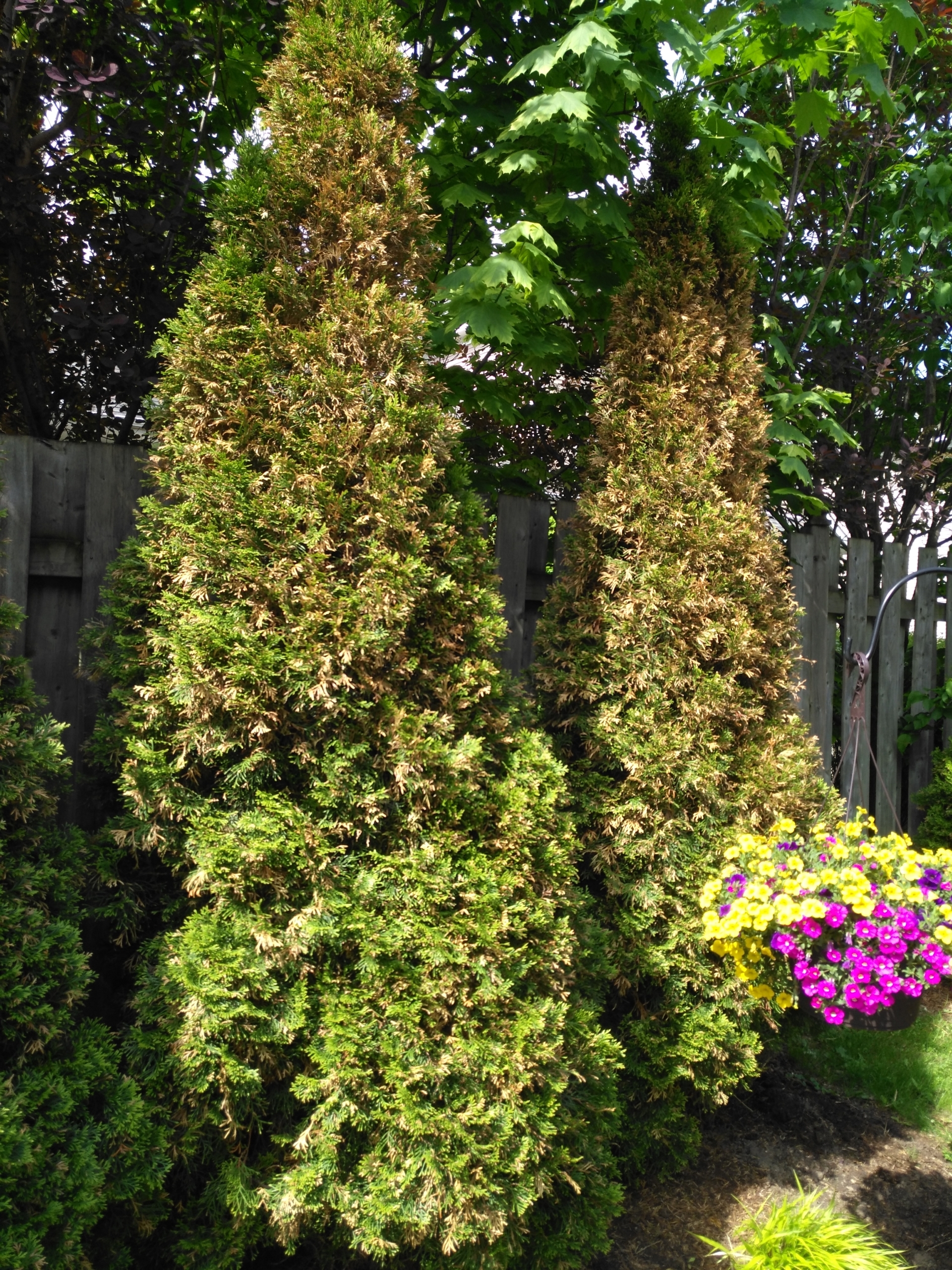Last week I wrote about a relatively new insect that has moved into town – the box tree moth.
Now, I would like to introduce you to another pest we are seeing more of this season – the cedar leaf miner.
Although not new to this area, it seems to be becoming more prevalent. There are several species of cedar leaf miner that exist in Ontario, but the most common one found here is Argyresthia thuiella.
The Insect: Understanding the life cycle of an insect will help you understand how best to deal with it. From now to mid-July, the adult moths are active.
The small, silver moths have a three-eighths of an inch wingspan and a brown fringe on the edges of their fore wings. If you brush up against cedars and see a cloud of small moths, you most likely have an infestation.
After mating, the females deposit eggs on the inner edges of the tips of the cedar leaves. When the young larvae or caterpillars hatch, they are about one-eighth of inch long and are light greenish brown with a shiny black head.
They begin to mine into the foliage tissue and will overwinter – and continue to feed inside in early spring. Pupation occurs in late May and the adults emerge soon after. There is only one generation per year.
The Damage: If you have been noticing the outer tips (about one inch) of your cedars turning brown this spring, then you might have cedar leaf miners.
We know from their lifecycle that the larvae feeding inside are causing the tips of the foliage to turn brown. The mined tips turn at first to a straw colour and later turn brown.
Since foliage has been hollowed out, the brown tissue will easily crumble between your fingers, whereas if it was winter damage, that brown tissue does not crumble.
Another way of telling that the brown tips are caused by cedar leaf miners is that there will be a sharp margin between the healthy green tissue and dead brown tissue.
To find the larvae inside the tissue, gently tear the leaf scale along the margin between the green and brown tissue. Look for a tiny green or yellow larva or pupa in this area in the spring.
The Solution: A light infestation for a season or two is not enough to kill your cedars, but a heavier infestation over a number of years will slowing thin out your cedars and eventually could kill them.
The key is not to let it go untreated that long and get to that point. Monitoring your plants and catching the problem early is the easiest way to keep your cedars healthy
If you are just starting to see some brown tips in the spring, you can greatly reduce their numbers by shearing the infested tips and destroying them before June. This way you are destroying the larvae before they emerge as moths and mate.
This should always be your first course of action early on. If you have a heavier infestation or have let the problem go untreated, you can try controlling them as adult moths late June to mid-July.
Since adults are flying moths, they do not provide an easy target and you will only be partially effective. If spraying for the moths, you use any all-purpose insecticide such as Malathion or Bug-B-Gon.
Most insecticides must come into to contact with the insect in to kill it. Since the larvae are feeding inside the leaf tissue, regular insecticides are useless when it comes to spraying while the larvae are still inside the foliage.
At this stage of their lifecycle, a systemic insecticide can be used as a foliar spray or as a soil drench. A systemic insecticide is absorbed by the plant through leaves or by roots.
Whatever is then feeding on the plant (from the inside or outside) takes up the chemical. Unfortunately, systemic insecticides were taken of the market when pesticide bans came in a few years ago. Arborists are still able to use forms of systemic insecticides and you can hire them to treat your cedars to control the larvae.
To help your cedars recover quicker, it is always a good practice to be deep watering the plants, especially during a dry season. Deep watering means that you let the water run slowly for a longer time so the moisture gets deeper into the soil. It also means you water longer but less frequently.
If you have a hedge of cedars, a good way of providing this deep watering is by laying out a soaker hose at the base of the plants. This way the water soaks deeper into the soil.
Fertilizing is also another great practice to help damaged plants recover. Use an organic fertilizer when possible. It provides a slower more controlled and longer-lasting feeding.
Joanne Young is a Niagara-on-the-Lake garden expert and coach. See her website at joanneyoung.ca.








